Future-proofing your home means making smart changes now that’ll save you money and keep your house comfortable for years. Technology keeps moving fast, and the weather seems less predictable than ever, so homes need updates that can handle whatever’s next.
The right home improvements can cut your energy bills and make your house easier to live in as you age. They also bump up your property value.
Smart technology, energy-saving features, and accessible design are quickly turning into must-haves for modern homes. These upgrades help you stay ahead of rising utility costs while making your space more comfortable.
1) Install smart thermostats like Nest or Ecobee
Smart thermostats can future-proof your home by letting you control heating and cooling from anywhere. Just use your phone or even your voice.
Need a Home Fix – Emergency or Routine?
From leaks and no-heat nights to simple tune-ups, our 24/7 hotline connects you with trusted local pros in minutes.
These gadgets learn your schedule and tweak the temperature automatically. You get better comfort and lower bills without fiddling with the settings all the time.
Nest thermostats pick up on your habits and create schedules based on when you’re home or away. Ecobee models focus on energy efficiency and work with remote sensors for different rooms.
Both brands play nicely with Alexa and Google Assistant, so you can just tell them what you want. You don’t need to be a tech genius to install one-most people can get it done in under an hour.
Some models come with adapters if your wiring is a little old-school. These thermostats save money by making sure you don’t heat or cool an empty house.
They also get software updates, so you keep getting new features over time. It’s nice knowing your gadget won’t get outdated too quickly.
2) Upgrade to energy-efficient double-glazed windows
Double-glazed windows use two panes of glass with an insulating gas (usually argon) in between. That extra layer helps keep your place warmer in winter and cooler in the summer.
They do a much better job at stopping heat loss than single-pane windows. Your heating and cooling system doesn’t have to work as hard, so your bills drop.
You’ll also notice less noise from outside-fewer car sounds, fewer barking dogs. The improved insulation means you won’t get those annoying hot or cold spots near the windows.
Energy-efficient windows can even boost your home’s value. A lot of buyers want efficient features, and this upgrade often pays for itself through savings.
If you’re adding new windows, slap on some weatherstripping and caulk around the edges. That stops air leaks and makes the upgrade even better.
3) Add LED smart lighting with motion sensors
LED smart lighting with motion sensors brings your lighting into the 21st century. The lights turn on when you walk in and off when you leave-super handy.
They’re perfect for spots like hallways, bathrooms, and entryways. Ever stumble into the kitchen at night? Problem solved.
You can hook these up to platforms like Philips Hue or Samsung SmartThings. That way, you control everything from your phone and set up custom routines.
The energy savings add up fast. Lights only turn on when needed, so you aren’t wasting electricity on empty rooms.
Most motion sensor LED lights are easy to install. Some just plug into standard outlets or screw into existing fixtures.
Smart lighting systems can also dim or brighten automatically, depending on the time of day or sunlight. That’s a nice touch.
They even help with security by making it look like someone’s home when the lights pop on as people walk by.
4) Incorporate solar panels to reduce energy costs
Solar panels can slash your electricity bills by half or even more. You use the sun’s energy instead of relying on the grid.
Most folks break even on their investment in about 6-10 years. After that, the electricity is basically free.
Solar tech keeps getting better, too. Panels in 2025 are more efficient and look a lot nicer than the older ones.
If you add battery storage, you can keep the lights on even when the sun isn’t out. That’s peace of mind during outages.
Solar panels also increase your home’s value. Studies say they bump up property values by around 4%.
Don’t forget about tax credits and rebates – they can really lower the upfront cost. Plus, modern panels blend in with most roof styles, so your house doesn’t look like a science experiment.
The average American home wastes a lot of energy. Solar helps fix that with clean, renewable power.
5) Use water-saving fixtures such as Moen Eco-Performance faucets
Water-saving fixtures don’t just help the environment – they cut your monthly bills, too. Modern faucets use less water without sacrificing pressure.
Moen Eco-Performance faucets, for example, can cut water use by up to 50%. You still get a strong flow, but you waste way less water.
Look for the EPA WaterSense label when shopping. That means the faucet meets strict efficiency standards and can save thousands of gallons a year.
Most water-saving faucets fit right onto standard plumbing. You don’t have to rip out your whole kitchen or bathroom to upgrade.
If swapping out faucets isn’t an option, just screw on an aerator. They’re cheap – usually under $10 – and they mix air with water to keep the pressure up while using less water.
Low-flow showerheads and efficient toilets help, too. Together, these upgrades make a real dent in your home’s water use.
Some states are starting to require water-efficient plumbing in new homes, so getting ahead of the curve now isn’t a bad idea.
6) Create step-free entryways for accessibility
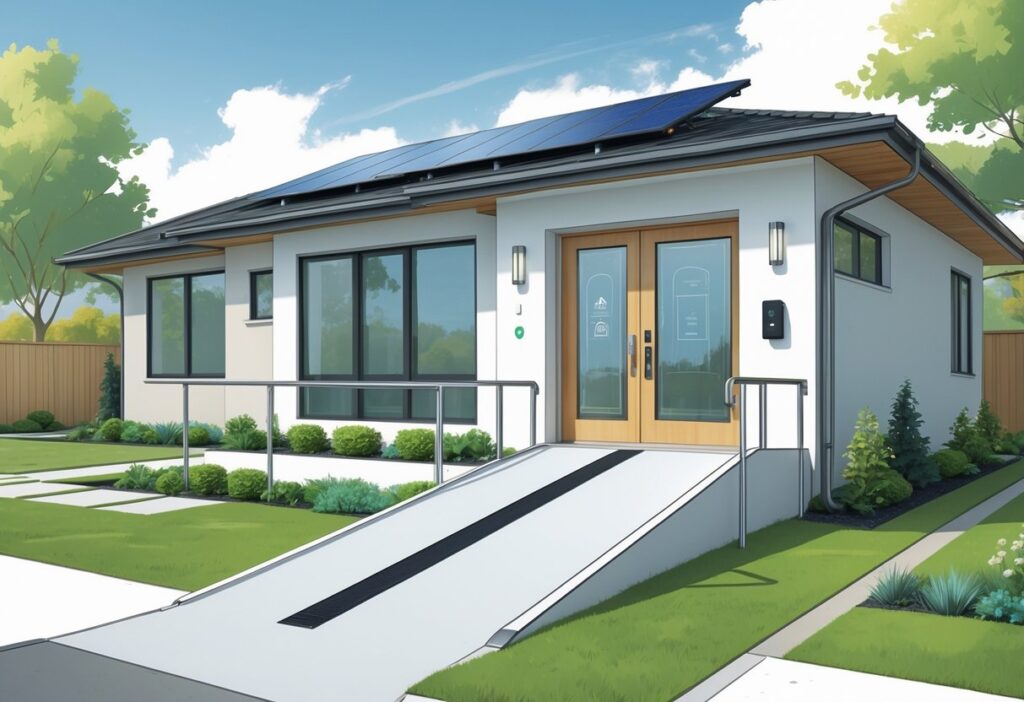
Step-free entryways make your home accessible to everyone – people with wheelchairs, walkers, strollers, or even just arms full of groceries. No one likes tripping over a step, right?
Install a ramp at your main entrance instead of steps. Make sure it’s got a gentle slope and a non-slip surface for safety.
If you’re remodeling, consider a zero-step entry. You can raise the ground outside or lower the floor inside for a smooth transition.
Widen your doorway to at least 36 inches. That gives enough space for wheelchairs and makes moving furniture easier, too.
Swap out round knobs for lever-style handles – they’re just easier for everyone. Smart locks can also make life simpler.
Add plenty of lighting around your entry. Motion-sensor lights help people see at night and cut down on trips and falls.
Keep the path to your door clear and level. Move planters or decorations out of the way to make things safer.
7) Install a tankless water heater for instant hot water
A tankless water heater gives you hot water on demand, so you never run out. No more waiting around for the tank to refill.
They’re compact and free up space in your garage or basement. Plus, they only heat water when you need it, which saves energy.
You can pick gas or electric models. Gas heats water faster but needs venting; electric is simpler to install but might need electrical upgrades.
Most homeowners hire a pro for installation since it involves plumbing and sometimes electrical work. But the payoff is a system that lasts 15-20 years with proper care.
Endless hot water and lower energy bills? That’s a win. Buyers like this upgrade, too.
8) Upgrade insulation with spray foam or cellulose
Good insulation keeps your home cozy in winter and cool in summer. Spray foam and cellulose are the top options right now.
Spray foam creates an airtight seal and works great in attics, walls, and crawl spaces. It also helps control moisture.
Cellulose is made from recycled stuff, so it’s eco-friendly and cheaper upfront. You can blow it into existing walls without tearing everything apart.
Both options outperform old fiberglass insulation by a mile. You’ll notice more consistent temperatures and lower energy bills.
Spray foam costs more but seals better; cellulose gives solid value for the price. Before you add insulation, seal up air leaks with caulk or weatherstripping to make the upgrade count.
Professional installers can tailor the job to your home’s needs. Upgrading insulation is one of the best ways to boost efficiency, and the savings add up over time.
9) Add USB outlets and wired internet ports in key rooms
Modern devices need steady power and internet. If you add USB outlets and ethernet ports in main rooms, your place feels ready for whatever tech comes next.
USB outlets let you charge phones, tablets, and other gadgets without those clunky adapters. They save space compared to regular outlets with giant plugs.
I’d put them in bedrooms, kitchens, and living rooms – basically wherever you’re glued to your screens the most.
Wired internet ports give you faster, more stable connections than Wi-Fi. They’re a game-changer for gaming, streaming, or working from home.
Ethernet cables keep speeds steady and don’t get tripped up by your neighbor’s Wi-Fi or a dozen smart devices.
Honestly, focus on the rooms where you’re online the most – home offices, bedrooms, entertainment areas. Wired connections shine there.
These upgrades even support the newest Wi-Fi standards that need super-fast ports.
Installing them means running cables through the walls to a central hub. Sometimes you’ll want a pro for the tricky stuff, but the payoff is worth it.
You get better performance and a little bump in home value, too.
10) Use eco-friendly paints with low VOCs
Regular paint gives off volatile organic compounds (VOCs) that pollute your air. They can cause headaches, dizziness, or even breathing problems.
Low-VOC and zero-VOC paints are just better for your home. They’ve got fewer nasty chemicals, so your air stays healthier.
Eco-friendly paints use natural or recycled stuff. They do the job just as well as the old-school kind, but you don’t have to deal with those harsh fumes.
You’ll find them in plenty of colors and finishes, so you’re not stuck with bland walls.
Low-VOC paint keeps your air cleaner for years. No lingering chemical smells, which is a relief, especially for bedrooms or spaces where you hang out a lot.
They’re also better for the planet – less pollution when they’re made and tossed out. More brands now offer safe, durable options, which is great.
You can use low-VOC paints on walls, ceilings, even furniture. They dry just fine and cover as well as the regular stuff.
Key Principles for Future-Proofing Your Home
Future-proofing your home? It really comes down to three things: making spaces flexible, boosting energy efficiency, and adding smart tech. Get those right, and your home stays useful and valuable for decades, maybe longer.
Adaptability to Changing Needs
Your home should keep up as your family or needs change. Flexible spaces matter way more than you’d think.
Open floor plans make it easy to switch things up. One year it’s a dining room, the next it’s your new office. Or a playroom turns into a guest bedroom, just like that.
Wide doorways and hallways help everyone get around. Standard doors are 32 inches, but 36 inches is way more accessible for wheelchairs or walkers. It’s one of those upgrades you’ll thank yourself for later.
Removable walls between rooms give you options. Non-load-bearing walls can come down if you want bigger spaces, or go back up if you need more rooms.
Multi-level living planning matters, too. Got just one bathroom upstairs? Maybe add one downstairs so you’re not climbing stairs forever. A main-level bedroom is smart if stairs ever become a pain.
Storage solutions that adjust or move make life easier. Built-in shelves with adjustable heights beat fixed storage every time.
Energy Efficiency and Sustainability
Energy-efficient upgrades save you money and help the planet. Plus, they shield you from rising energy bills down the road.
Better insulation in walls, attics, and basements keeps things comfy all year. You could cut heating and cooling costs by up to 30% – not bad.
High-performance windows with double or triple panes keep energy from leaking out. Look for low-E coatings to block summer heat and trap warmth in winter.
Energy-efficient appliances use less power and water. When your old ones die, swap them for Energy Star models – they usually last longer and work better.
Solar panels can slash or even erase your electric bills. Add battery storage and you’re set, even when the sun’s not out.
Water-saving fixtures like low-flow toilets and showerheads cut water use without sacrificing comfort. They often pay for themselves with lower bills.
Smart Technology Integration
Smart tech makes life easier, safer, and more comfortable. Pick systems that can grow as new gadgets come out.
Voice-activated controls let you run lights, temperature, and appliances without moving. Super helpful if you’re older or have mobility issues.
Smart thermostats learn your habits and tweak the temp for you. They can save 10-15% on energy bills and keep things cozy.
Security systems with cameras, smart locks, and sensors keep your place safe. You can check everything from your phone, even if you’re away.
Automated lighting turns lights on or off based on your schedule or movement. Saves energy and keeps you from tripping in the dark.
Smart electrical panels and wiring get your home ready for new tech. Add extra outlets and make sure your system can handle future gadgets.
Long-Term Value and Maintenance Considerations
The smartest home improvements pay off when you pick upgrades that buyers actually want and use materials that last. Go for projects future buyers will care about, and choose stuff that doesn’t need fixing every few years.
Enhancing Home Resale Potential
Kitchen and bathroom renos usually give you the best bang for your buck. You’ll get back around 70-80% of kitchen remodel costs and 60-70% for bathroom upgrades when you sell.
Energy-efficient improvements attract today’s buyers. Solar panels, smart thermostats, and efficient HVAC systems cut utility bills, and people notice. These features can set your home apart.
High-Value Improvements:
- Kitchen cabinet refacing or replacement
- Bathroom vanity and fixture updates
- New flooring (hardwood or luxury vinyl)
- Fresh interior and exterior paint
- Landscaping and curb appeal enhancements
Keep receipts and warranties for every upgrade. Take before-and-after photos to show buyers the work you’ve done. This stuff helps you justify your price when it’s time to negotiate.
Selecting Durable and Timeless Materials
Pick materials that stand up to daily life and still look good. Quartz countertops outlast granite and need less upkeep. Luxury vinyl plank flooring gives you the wood look but shrugs off water.
Durable Material Options:
- Roofing: Composite shingles (30-50 year lifespan)
- Siding: Fiber cement (25-40 years)
- Flooring: Engineered hardwood, luxury vinyl
- Countertops: Quartz, granite
- Windows: Double or triple-pane with quality frames
Skip trendy colors and patterns that age fast. Stick with neutral paint and classic tile. Natural wood finishes work with almost any style over the years.
Quality installation matters just as much as the material. Hire licensed pros who offer warranties. Good work now means fewer headaches later.
Frequently Asked Questions
Smart tech, energy upgrades, and sustainable improvements all help homes hold their value and stay functional. Here are some of the most common questions about making your home more adaptable for the future.
What are the top smart home technologies that enhance long-term value?
Smart thermostats like Nest or Ecobee are probably at the top. They learn your routines and adjust temps automatically, saving up to 15% on heating and cooling.
LED smart lighting with motion sensors is another big one – super convenient, saves energy, and lasts way longer than old bulbs. Plus, they boost security by turning lights on when you walk in.
Smart locks and security systems are a hit with buyers. They let you monitor and control access remotely. Video doorbells like Ring or Nest Hello are especially popular now.
Voice assistants tie everything together. As more homes get smarter, this tech just keeps getting more valuable.
How can energy-efficient upgrades impact the future resale value of a home?
Energy-efficient double-glazed windows can bump up your home’s value by 5-10%. They slash heating and cooling costs, and buyers love lower bills.
Solar panels usually add about $4 per watt to your home’s value. A 5-kilowatt system could mean $20,000 more. Some buyers even hunt specifically for solar homes.
Energy-efficient appliances draw in eco-minded buyers. They cut monthly bills and sometimes qualify for tax credits. These upgrades often pay for themselves in three to five years.
Good insulation and air sealing boost your home’s energy rating. Homes with high efficiency scores tend to sell faster and fetch better prices.
What renovation projects offer the best return on investment for a future-proof home?
Kitchen upgrades almost always pay off. Modern appliances and smart layouts are a big deal to buyers. Stick with energy-efficient models and classic looks.
Bathroom renos, especially for master baths, add real value. Put in grab bars and wider doors for accessibility – those features matter more as people age.
Adding a second bathroom is huge, especially in homes with just one. It makes daily life easier and boosts value.
Updating floors to hardwood or luxury vinyl is another smart move. These materials are tough, easy to clean, and work well for folks with mobility aids.
How important is sustainable landscaping for future-proofing a residential property?
Sustainable landscaping can cut water use by 30-50%. Native plants need less care and irrigation, and they handle wild weather better than imports.
Drought-resistant plants get more valuable as water bills climb. They look good with hardly any effort, which appeals to busy or eco-conscious buyers.
Permeable surfaces help with stormwater runoff, reducing floods and erosion. Some cities even require or reward these features now.
Edible landscaping – think fruit trees or veggie gardens – brings a bonus. You get fresh food, lower grocery bills, and a selling point for health-focused buyers.
In what ways can upgrading to eco-friendly appliances contribute to a home’s longevity?
Eco-friendly appliances use less energy and water, so your home’s systems don’t have to work as hard. That means fewer repairs and longer lifespans.
Energy Star appliances usually last longer than standard ones. They’re tested more strictly and often come with better warranties and support.
Water-saving fixtures like Moen Eco-Performance faucets lower stress on your plumbing. They keep the pressure up but use less water, which helps your pipes and water heater last longer.
Efficient HVAC systems don’t have to work as hard to keep things comfy. Less wear and tear means fewer breakdowns and replacements down the line.
What should homeowners consider when planning for multi-generational living spaces?
Universal design features just make sense for all ages and abilities. Wide doorways help out if you ever need to fit a wheelchair or walker through – no more awkward squeezing.
If you can, aim for single-floor living. Stairs get old fast, literally and figuratively.
Separate entrances? Game changer for privacy between generations. Everyone gets their own space but stays close enough for that family vibe.
Plus, with a separate entrance, you could even rent out part of the house. Not a bad way to offset expenses.
Bathrooms need to be accessible, no question. Walk-in showers are just easier, and honestly, grab bars and non-slip floors should be standard at this point.
Falls happen, especially as folks get older, so these little upgrades make a big difference.
Think about flexible room layouts, too. You never really know how your needs might shift over time.
Open floor plans beat out those old, chopped-up layouts. It’s easier to move around and keep an eye on things when you need to.
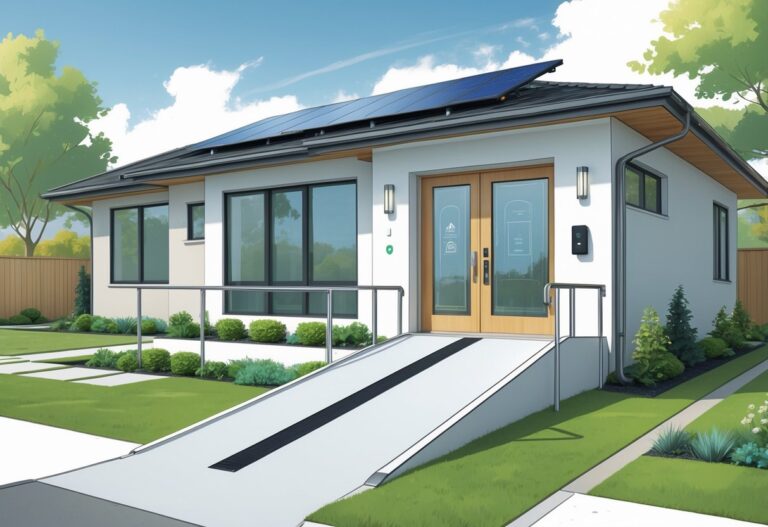
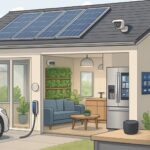
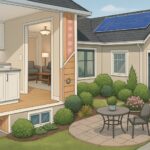
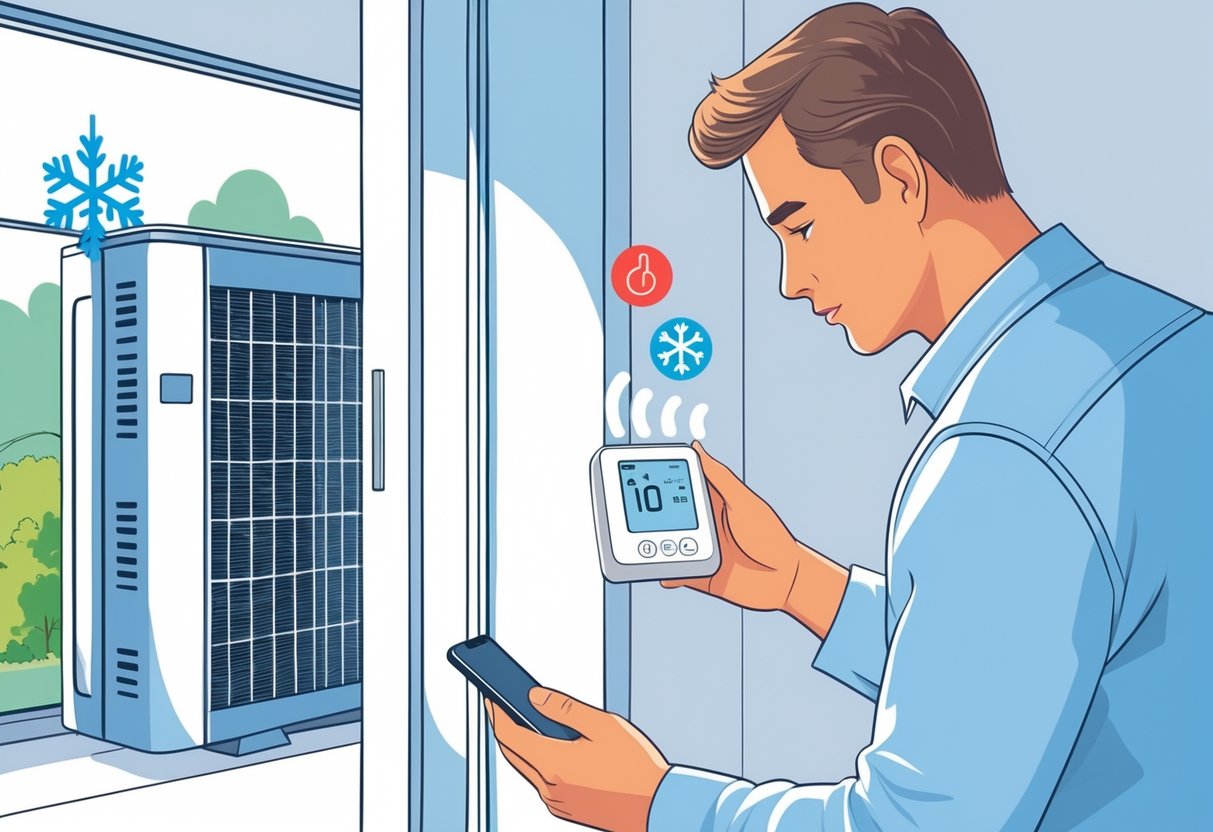

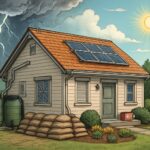

Leave a Reply